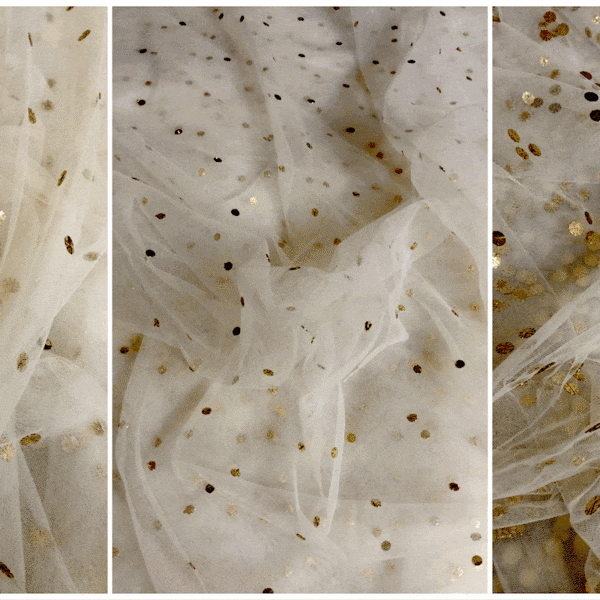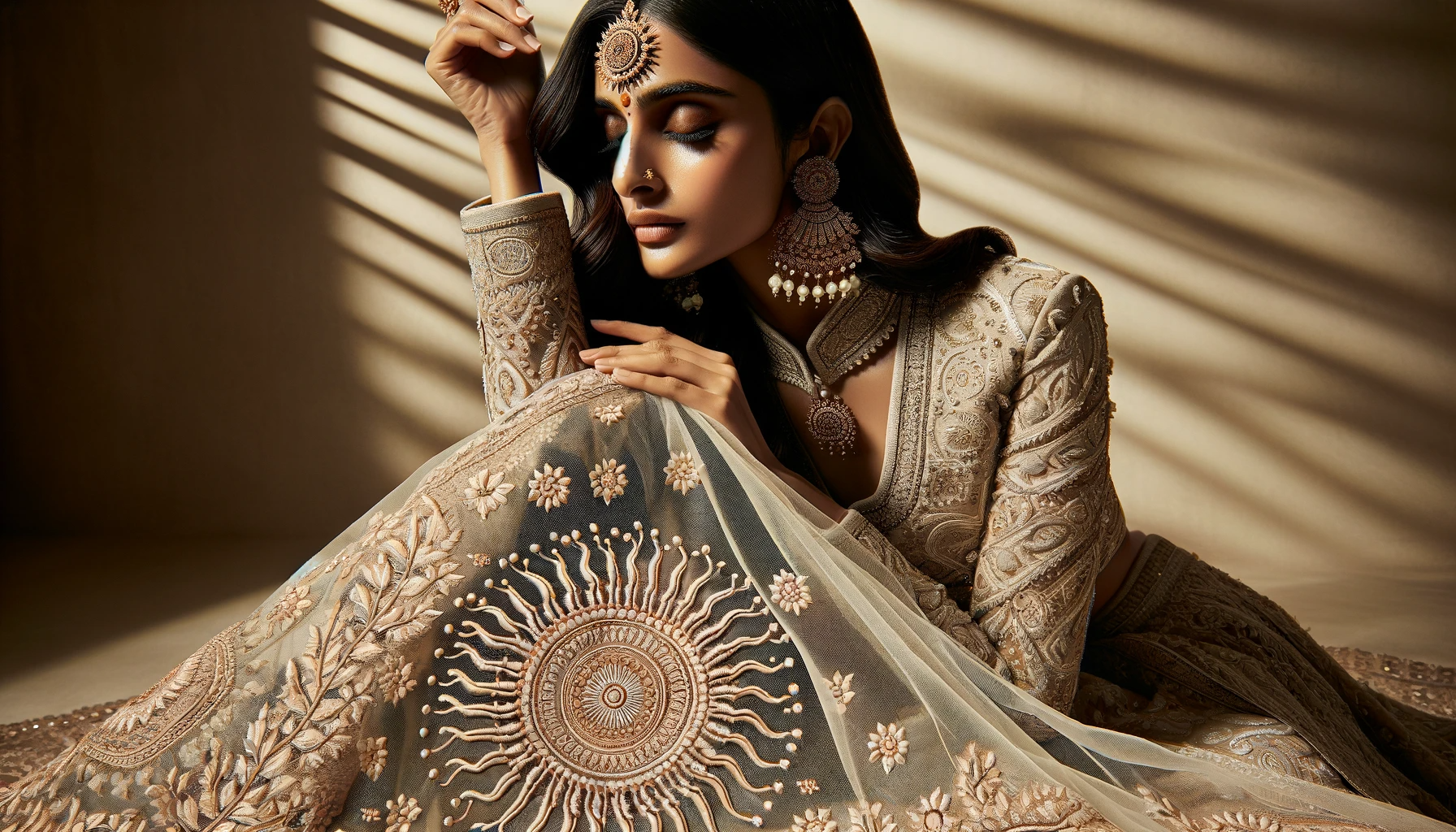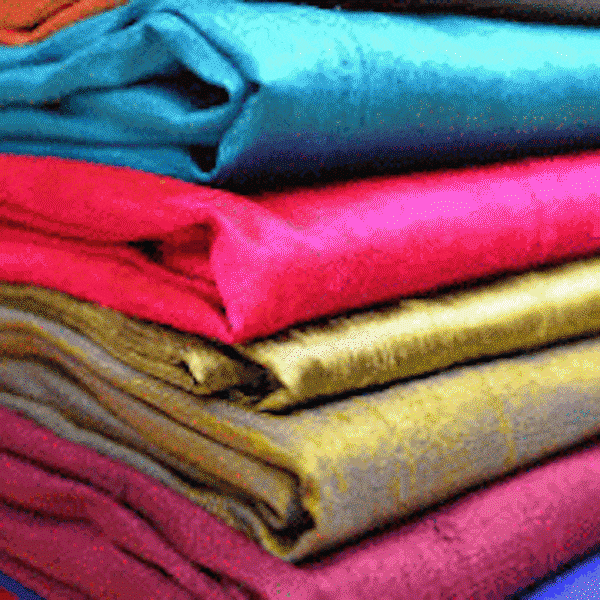SILK FABRIC
Silk is a completely natural fiber that is produced by the silkworm to make a cocoon. It is spun into a smooth, shiny and sleek fabric. Silk absorbs moisture, which makes it cool in the summer and warm in the winter – and it's this high level of absorbency that means it can be dyed many different colors. Made predominately of proteins, it is a delicate yet tough compound that makes up the basic component of all the silk yarns and fabric used to make clothes and accessories.
TYPE OF SILK FABRICS
Canton Crepe Silk
A soft, silk fabric with a finely crinkled texture, similar to, but heavier than, Crêpe de Chine. Takes its name from Canton (Guangzhou), a Chinese city.
Chiffon Silk
Chiffon literally means “rag” in French. This elegant, sheer fabric is quite limp, with a beautiful drape. It has a soft, supple, thin hand and a flat, crepe-like texture.
China Silk
Please see Habutai.
Crepe Silk
Silk Crepe is a luxurious fabric with a good sheen and a pebbly texture obtained by using high twist yarns. Silk Crepe has a beautiful drape and is extensively used to make dresses, slacks, skirts, lightweight suits, bridal gowns, and evening wear.
different filaments constituting raw silkrounding off the angularities of the thread and squeezing off the extra moisture and gum.
Gauze (Silk)
Silk gauze is a sheer, thin open weave fabric sometimes confused with organza. Silk organza is heavier and crisper. As it sounds, silk gauze is more loosely woven and fairly floppy. Unlike its cotton cousin, silk gauze is not used for bandages.
Georgette Silk
Fine, lightweight, plain weave, crêpe fabric, usually having two highly twisted S and two highly twisted Z yarns alternately in both warp and weft. Made of crepe yarn, silk georgette has a grainy texture, a sheer feel, and a thin, very dry hand. It is heavier than chiffon, and is similar to silk crepe, but is not as soft or lustrous as the crepe. Georgette is durable but snags easily. Drapes very fluidly, and falls into soft ripples.
With its creped surface, this sheer and strong silk fabric is great for blouses, bias-cut flared skirts, evening wear, dresses, and scarves. Doesn't show pin marks, and doesn’t hold a crease. Relatively difficult to sew.
Habutai Silk
Habutai is a Japanese word meaning “soft as down.” Habutai is a plain weave of silk, originally hand woven of single warp yarns and filling yarns of hand-reeled silk, which made it slightly irregular. Habutai usually has a natural, ecru color, and is known to wrinkle less than other fabrics. Both Habutai and China silk are soft, lightweight and lustrous. Very closely related, both have a soft graceful drape, and a smooth surface. This silk is the "hand" or touches that many people identify as silk. Habutai is natural in color, sheer and ivory, and China silk is smoother and usually dyed. Seams may pull open on tightly fitted garments. Sews relatively easily, and doesn't show pins marks. It is best for lingerie, dresses, blouses, and light jackets.
.
Kamdani
An Indian term for fine fabric with ornamentation made with gold and silver threads.
Kashmere Silk
Silk fabric made with 2/1 right-hand twill weave that gives a soft finish.
Matka
Matka is an Indian term for rough handloom silk fabric made from very thick yarns spun out of the pierced cocoon in the weft and organzine in the warp. The yarns are obtained from short ends of silk from Mulberry silkworms (Bombyx mori) and spun by hand without removing the gum (sericin). As such, there are slubs and irregularities that give the fabric a unique character. It looks something like tweed, but the fibers are all the same color. Matka sews easily and is good for suits, jackets, and furnishings.
becoming very small. Silkworms should not be disturbed at this time. They will eventually shed the skin, rest for a while, and then begin feeding again.
Muga
The common name of the Antherea assama caterpillar which eats the leaves of the Som tree (machilus bombycine) or Soalu (little polyantha). This is a wild caterpillar reared in Assam, India. The silk produced is golden in color.
Muga Cloth
A fabric is woven using Muga Silk in warp and weft, mainly produced in Assam, India.
Mulberry
A common name of the Morus alba tree, which is the sole food of the Bombyx mori silk producing caterpillar. It is a hardy perennial tree and yields silk mainly of yellow, white, or greenish yellow color.
.
Noil (Silk)
Silk Noil (sometimes incorrectly called raw silk) comes from the use of very short fibers (called, appropriately, 'silk noils') to weave the fabric. The short fibers are separated from the long fibers during combing in the fiber preparatory processes before spinning.
Organza Silk
Silk Organza is a sheer, thin open-weave fabric that is heavier and crisper than silk gauze. It has a smooth, flat finish, is strong and durable, and gets its stiffness from tightly twisted yarns. Often used as the base fabric for embellished fabrics.
because they can be seen from the outside of the garment. It is mostly used for interfacing, veils, and undergowns.
Raw Silk
Continuous filaments of silk, with no twist, which have been reeled from cocoons but are unprocessed and still containing sericin.
Tussah (also called Tussar, Tasar, Tussore)
A medium to heavy weight silk made from free-range (Woo Hoo) wild silkworms of the Antheraea mylitta or Antheraca proylei species. The warp and weft yarns of this plain weave silk fabric are very different, giving tussah the look of woven grasses. Tussah is relatively uneven, has small lumps and is less lustrous than cultivated silk. It does, however, tend to be stronger, perhaps because it is a somewhat thicker fiber. Because of tannin-rich diet, Tussah is almost always a natural brown color. But it does dye well and is good for suits, jackets, and home decoration. Sews easily but may unravel, so finished seams are advisable.
Twill (Silk)
Made from silk yarns woven in a twill weave which gives the fabric a soft hand and high durability, making the fabric ideal for sportswear. Used in blouses, skirts, and dresses.
Twill, a textile weave in which the filling threads pass over one and under two or more warp threads to give an appearance of diagonal lines. Twill is very strong and soil resistant with an appearance of fine diagonal lines. This is one of the three basic textiles weaves, producing a fabric with a diagonal rib, ridge, or wale.
Velvet (Silk)
Silk velvet is a soft, elegant fabric that looks and feels expensive. It drapes better than other velvet, falling close to the body. The silk velvet mostly available is silk rayon combination: rayon pile on a silk base (often in an 80-20 ratio respectively). 100% silk velvet is rare and expensive.
Suryansh Fab is Supplier, Wholesaler, and Retailer Of silk Fabrics in India.
Send Message


